DeleteMe vs. Optery comparison [2025 review & explanation]
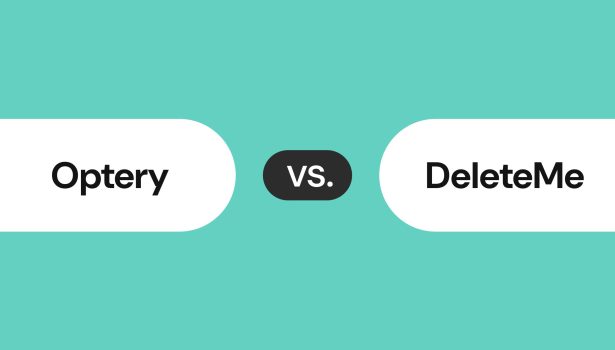
DeleteMe and Optery are personal data removal services that focus primarily on people-search sites. Optery also includes data brokers that don’t have publicly available databases on all of its plans. Though both services may send users’ personal details to brokers during opt-out, Optery is more likely to expose your data to those that never had it as the service can’t scan some sites it covers to see if they have your information.
DeleteMe’s dashboard lets you track removal progress based on the number of listings removed and the number of data brokers with your info, but it doesn’t link to pages containing your data or show the removal status for each broker. The latter can be found in activity reports that are issued quarterly.
Optery’s dashboard provides removal status for each site it covers and links to pages where your information is likely to be exposed. However, the statuses can be misleading and links are added regardless of whether your data is actually there. Optery’s quarterly Removals Reports, in turn, show only relevant results with before-and-after screenshots.
Optery’s unique feature is taking screenshots of personal information they find exposed on data brokers and adding them to the dashboard and reports for visibility. DeleteMe’s unique features include email and phone masking and a built-in Google search that lets you check Google search results for your name.
DeleteMe vs Optery: a comprehensive feature comparison
| DeleteMe | Optery | |
|---|---|---|
| Data broker coverage | 750+ overall, but only around 100 included in the Standard plan | 90+ to 610+ depending on the plan, lower-tier plans miss some major brokers |
| Removal process | A mix of automated and manual | Automated, manual reviews on Extended and Ultimate plans |
| Reporting | First activity report in 7 days, then quarterly | Exposure Report upon sign-up, quarterly Removals Report on Extended and Ultimate plans |
| Custom requests | 40 per year | Available only on the most expensive plan |
| Free scan | Yes | Yes |
| Customer support | Email, chat, phone, knowledge base | Email, chat, social media, knowledge base |
DeleteMe vs Optery: data broker coverage showdown
DeleteMe can remove personal data from more than 750 data broker websites overall, but the Standard plan includes only around 100 sites and Premium plans add around 22 more. The rest 600+ data brokers are covered via custom requests – when you find exposed profiles yourself and submit them to DeleteMe to handle data removal. The service allows 40 custom requests per year, 10 per quarter.
DeleteMe primarily focuses on public databases AKA people-search sites, though custom removals are accepted for non-public data brokers as well.
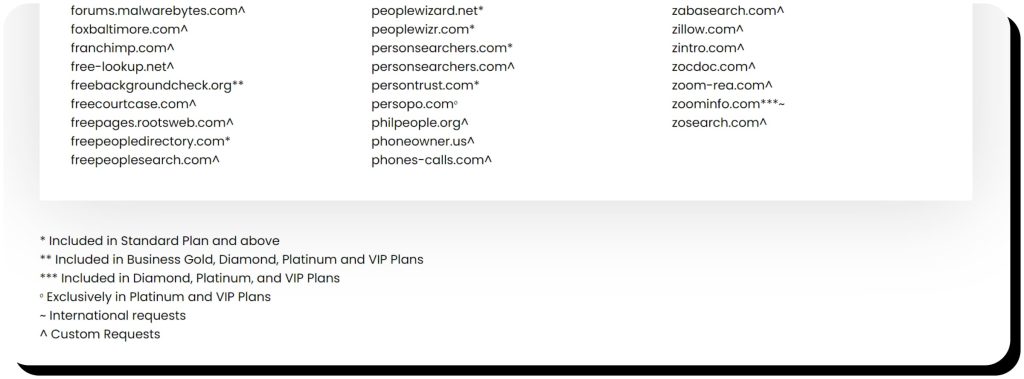
Optery’s data broker coverage greatly depends on the plan you subscribe to:
- Core: 90+
- Extended: 245+
- Ultimate without Expanded Reach: 365+
- Ultimate with Expanded Reach (adds sites that don’t meet Optery’s data removal verification processes): 610+
Optery also has a Free Basic plan that performs a quarterly exposure scan across all the sites it covers.
Optery focuses on people-search websites but also includes a handful of data brokers that don’t have openly available databases and can’t be scanned for your data. Though the service covers all the major people-search websites, some are only available on the most expensive plan, like FreePeopleSearch, Whitepages, and Radaris.
Data removal process
From what we can tell, DeleteMe uses a mix of automatic and manual processes to remove personal information from data brokers. They seem to scan people-search websites to try to find profiles, then automatically submit opt-out requests. If a removal request isn’t honored, they follow up with manual intervention. Each DeleteMe user is assigned a human “privacy advisor” for assistance.
Optery’s data removal process is likewise automated, though Extended and Ultimate subscribers also get human agents to review their accounts. The service autogenerates links to pages on people-search websites where your personal information is likely to be found. Then, they scan those links and take screenshots if your profiles are indeed found. Finally, Optery submits automated removal requests.
As for data brokers that don’t have openly published catalogs, Optery can’t scan them to check if they hold your information and to verify that it’s gone after a removal request. It’s important to understand that removal from non-public data brokers requires providing them with your personal details – they are used to locate you in their databases and identify the correct records for deletion. So, Optery does exactly that and simply sends customers’ sensitive data to non-public brokers, risking exposing it to sites that never had it in the first place. And even if a broker held the data, Optery can’t confirm it is truly gone after a removal request.
Evaluating removal quality: DeleteMe vs Optery
Evaluating removal progress via DeleteMe’s dashboard was a bit challenging as it lacks some important details (more on that later). In our view, quarterly activity reports are more reliable for that matter. Here are our observations:
- DeleteMe doesn’t provide links to all data broker profiles it removes and doesn’t share what personal details it finds, so we couldn’t check what records were removed from each site.
- As for the links that were provided, we found them pretty accurate.
- In seven days, DeleteMe claimed to remove us from 57 websites. We couldn’t double-check this as we couldn’t see what profiles exactly had been removed. The service also estimated they had saved us 4.5 hours each on search and removal for a total of nine hours saved.
- As for removal verification, we’re unable to tell whether DeleteMe rescans the sites or relies on data brokers’ responses.

Optery’s dashboard is very detailed but isn’t fully reliable as well. A better representation of your actual exposure and removal progress is its Exposure and Removals Reports. Here’s what we’ve observed:
- Optery adds autogenerated links to pages where your information is allegedly exposed regardless of whether it can actually be found via those links. Many links in our dashboard were faulty. Screenshots, on the other hand, are only added if they contain your data, but there can be false-positives as well (e.g. someone else with a similar name).
- After a month on the most expensive plan, around 100 people-search websites had a “Removed/ Not found” status. A closer look revealed that only around 40 were removed and over 50 “Not found”, meaning our data had never existed on those sites.
- After three months on the most expensive plan, around 30% of sites still had our profiles published even though they were marked as “Removed/ Not found.” Though Optery provides a mechanism to report such cases, this made us question whether the service rescans data brokers to verify that information is really gone or it relies on brokers’ confirmation.
- After a month on the most expensive plan, around 20% of data brokers still had no activity (no removal requests sent or not updated to “Removed/ Not found” because they never published our data). After three months, two sites still had no activity even though Optery featured them in the Exposure Report, meaning the service knew that those two sites exposed our information.
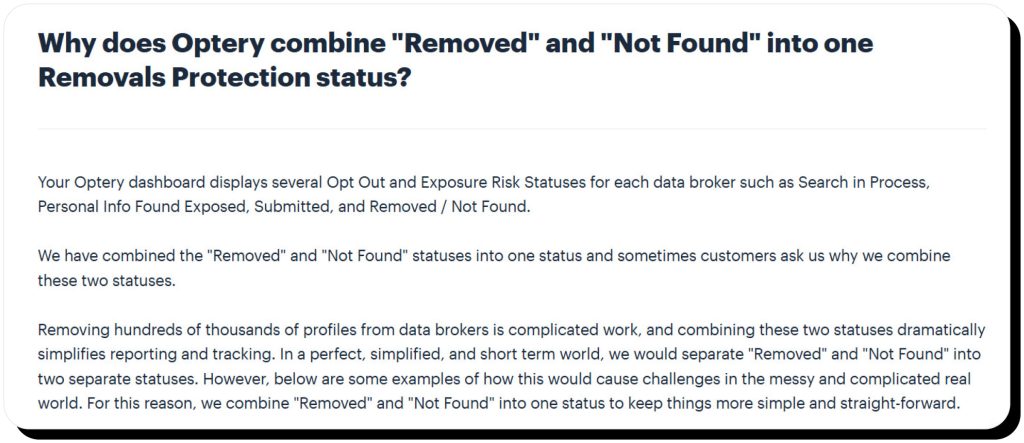
User experience: navigating DeleteMe’s and Optery’s platforms
DeleteMe’s dashboard is quite clear and easy to navigate. It displays:
- The total number of data brokers searched
- Number of listings reviewed (this is the number of all the listings DeleteMe has checked for your information, so not all of them will represent you)
- Number of data brokers with your info
- Interactive charts that depict:
- The number of listings reviewed by month
- The number of listings removed by month
- Commonly exposed data (types, not your specific details)
Though informative, the dashboard lacks some valuable details, like what data brokers exactly publish your data, what details are exposed (or links to profiles), and which profiles have been removed and which are still in progress.
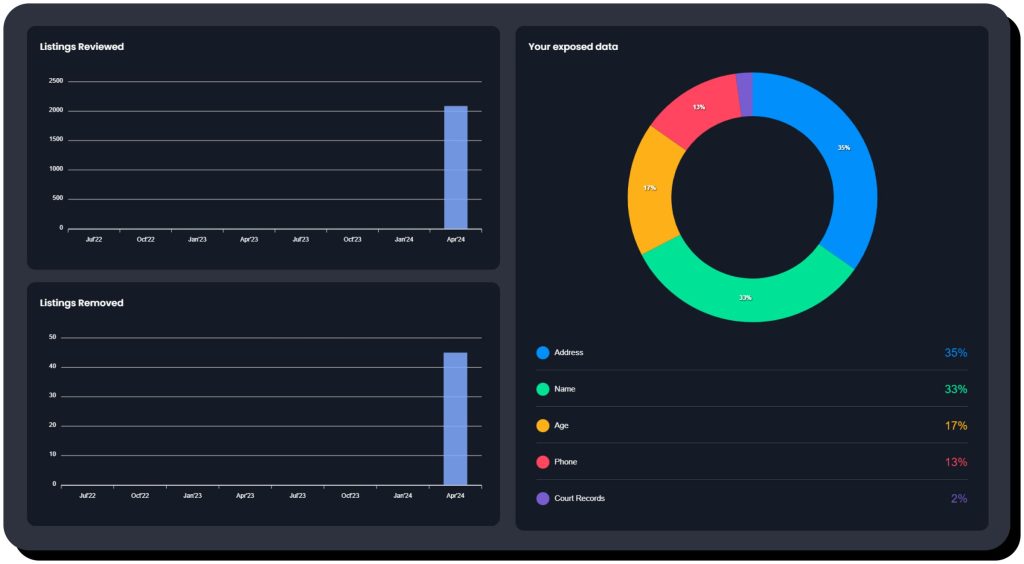
Optery’s dashboard is more comprehensive than DeleteMe’s yet not without its drawbacks.
The primary user interface features multiple sections:
- Data brokers visibility and removals summary
- Number of data brokers covered in our plan
- Exposure chart depicting the percentage of matched profiles found versus not found/search in progress
- Number of profiles removed/not found, removals in progress, and removals pending
- Primary scan tab
- Screenshots of your profiles found on people-search websites
- Screenshots of Google search results for your name (with links to people-search sites among top results)
- Number of matches found
- A list of data brokers Optery covers, each having:
- Plan coverage
- Exposure risk (the status of your data on a site)
- Screenshots and profile links (when available)
- Additional info (activity history, opt-out links, data broker background details)
In our experience, statuses and activity history were a bit misleading. In addition to Optery exaggerating the number of data broker removals by combining “Removed” and “Not found” into one status, many of the sites that never had our data still somehow stated “Profile removed successfully” in activity history. Moreover, our Exposure Report (the initial report after the first scan, Optery states it’s a more reliable representation of your actual exposure) had 114 websites publishing our data, but the dashboard claimed 219. Considering there weren’t any additional screenshots in the dashboard, we found this discrepancy confusing.

Monitoring and reporting: a comparative analysis
In addition to the dashboard, DeleteMe sends regular activity reports. The first one comes seven days after sign-up, subsequent reports are sent every 90 days. We found the report to be more informative than the dashboard as it lists:
- Last scan date
- Statistics in numbers: total listings reviewed (the listings checked for your information, not all of them are truly yours), number of your listings removed, number of data brokers with your personal info, the total number of PII found, and estimated time saved
Then, there’s the most important section that features data broker sites with:
- Removal status (Clean/ Removal in progress)
- Estimated removal times
- Types of personal data exposed (not your specific details)
- Some (not all) include links to data broker pages where your data is published
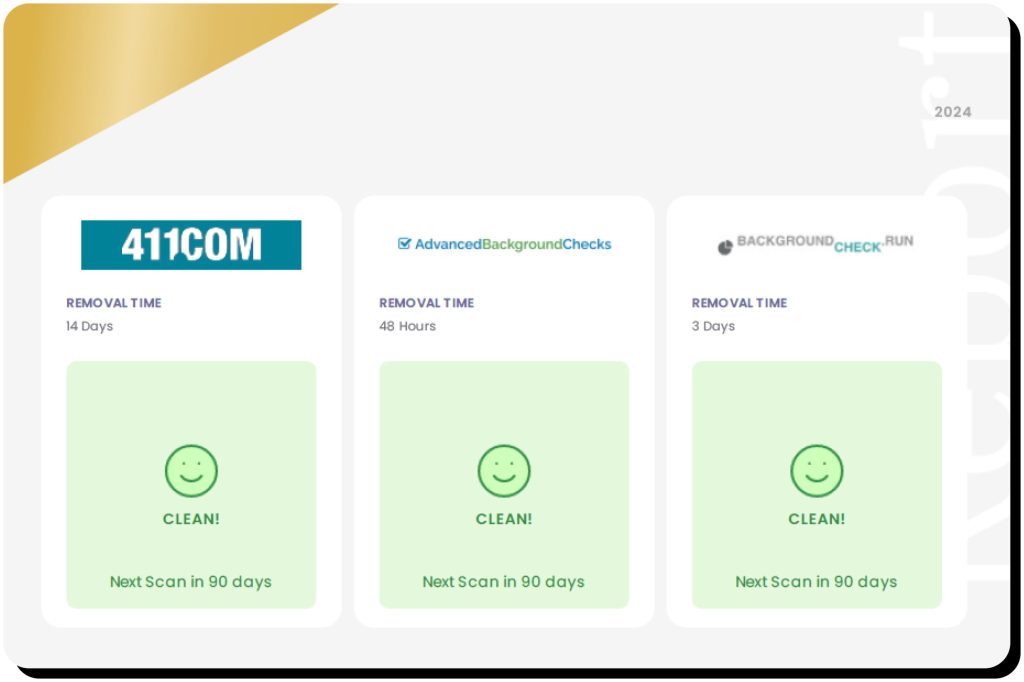
Optery also generates regular reports. The first one (Exposure Report) is sent after your initial scan is completed. Extended and Ultimate plans subscribers also receive subsequent Removals Reports, issued quarterly.
We found the reports to be more simple yet more reliable than Optery’s dashboard as they present only the actual exposures and don’t include irrelevant sites. They list:
- Names of data brokers Optery found your profiles on
- Screenshots of exposed data
- Links to pages where that data is exposed or removed from
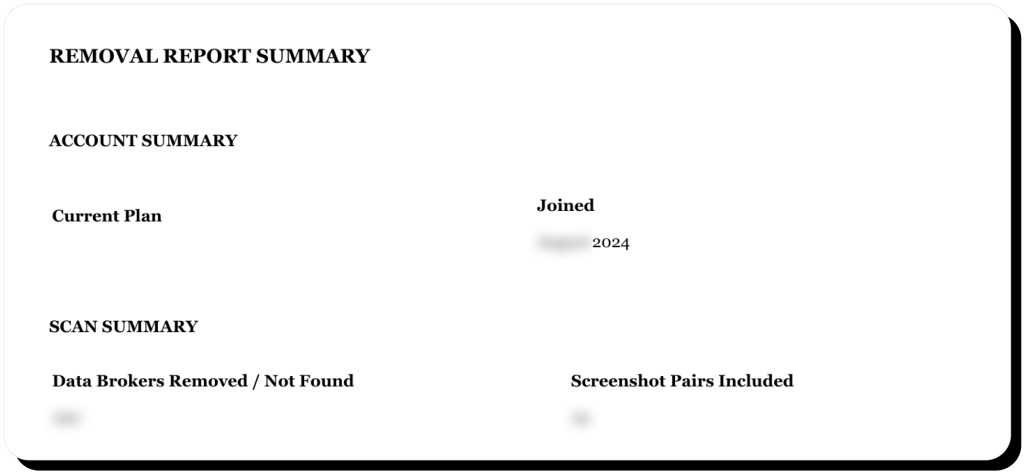
Extra features
Both DeleteMe and Optery accept custom removal requests from their users. DeleteMe allows 40 per year – 10 every quarter. Optery offers unlimited custom removal requests, but only on the Ultimate plan – the most expensive one.
In addition to data broker removal, DeleteMe has the following features:
- Search Yourself: Allows Googling yourself right through DeleteMe’s dashboard. You can also request that DeleteMe tries to remove the search results you select.
- Email masking: Creates a dummy email address you can use for third-party services instead of your primary one.
- Phone masking: Creates dummy phone numbers that cost $7 per number.
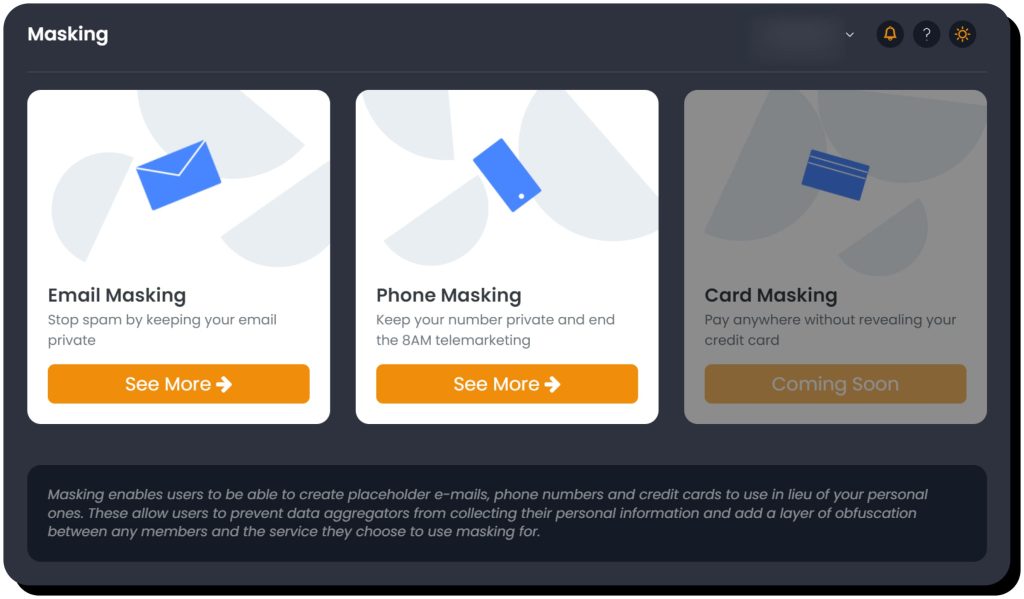
Pricing plans and subscription options
| DeleteMe | Optery | |
|---|---|---|
| Billing | Annual and biannual | Monthly and annual |
| Plans | Individual Couple (2 people) Family (4 people) | Individual Discounts for added family members and friends |
| Individual yearly plan | $129.00 | Core: $39 Extended: $149 Ultimate: &249 |
| Free trial | No | No |
Upon registering on DeleteMe, only its Standard plan is available. You can upgrade to premium and VIP plans after signing up in the dashboard but pricing is only available by contacting them.
The Standard plan allows adding up to 5 alternate names, email addresses, and phone numbers, and up to ten previous addresses – all will be scanned on data broker sites to find as many of your profiles as possible.
Optery offers several plans that cover a different number of data brokers. Though the only subscription option is individual, users can add new members to their dashboard at discounted rates.
The Core plan allows one name, city, and state variation per user. Extended and Ultimate plans allow unlimited name, city, and state variations. On all plans, only one email address and phone number can be scanned at a time.
Customer support: a critical comparison
Both DeleteMe and Optery offer email and chat support as well as knowledge bases. Optery also offers support via social media, but only DeleteMe has phone support.
We reached out to both companies via email. DeleteMe’s support team replied and addressed all our questions in about 20 minutes. Optery got back to us within 90 minutes with a detailed response. Though DeleteMe responded faster, we felt both data removal services had good email support.
User reviews and testimonials
Both DeleteMe and Optery have their share of supporters and detractors based on testimonials and reviews.
- At the time of this writing, DeleteMe has a 4.5-star rating on Trustpilot based on 162 reviews. Optery had a 4.4-star Trustpilot rating based on 103 reviews.
- Optery has earned positive reviews for removing personally identifiable information, finding profiles users didn’t know existed, and saving time on data broker removal.
- Users give DeleteMe positive ratings for reducing their digital footprint and removing inaccurate information, good customer support, and reasonable pricing.
- Optery has received negative reviews for slow removal progress and aggressive upselling, users finding their profiles on sites Optery claimed to have removed them from, and not taking action if data brokers ignore removal requests.
- Users give DeleteMe negative reviews for only removing a portion of the profiles they found, sharing email addresses with data brokers, and taking too long to remove data.
Pros and cons of DeleteMe
| DeleteMe pros | DeleteMe cons |
|---|---|
| Focus on people-search websites Informative removal progress reports 40 custom removals per year Free email address masking Free scan | Limited coverage of people-search websites on Standard plan Little transparency over what profiles/ data are found and removed Dashboard lacks valuable details, users have to wait for quarterly privacy reports No monthly billing option |
Pros and cons of Optery
| Optery pros | Optery cons |
|---|---|
| Ultimate plan covers more data brokers than most personal data removal services Provides screenshots of profiles exposed on data brokers Free plan runs quarterly scans and provides DIY data removal guides Allows adding unlimited friends and family members at discounted rates | All plans include non-public data brokers which Optery can’t scan for your data or verify removals Sends personal data to some sites for removal without being able to first check if they already have it Numerous faulty links in the dashboard Misleading language in the dashboard Sites updated to “Removed” even though they still expose the exact profiles Optery found Must subscribe to the most expensive Optery plan for coverage of some major people-search websites |
DeleteMe and Optery: which personal data removal service is more effective?
Both DeleteMe and Optery can remove information from broker databases and clean up your digital footprint. However, both services also have shortcomings when it comes to data removal and reporting.
If you’re concerned about your privacy, DeleteMe might be a better choice as it doesn’t expose your sensitive information to non-public data brokers as much as Optery does. If you want more comprehensive coverage, choose Optery’s most expensive plan.
While DeleteMe provides only yearly billing options, Optery’s plans are more flexible but data broker coverage also differs greatly among plans.
Ultimately, it’s up to you to evaluate what you expect and need most from a data removal service.
FAQ
What is the difference between DeleteMe and Optery?
DeleteMe covers more data brokers compared to Optery, with 750+ sites currently on its list. However, only around 100 are included in its Standard plan (which all new users buy by default). Optery’s coverage ranges from 85+ to 605+ sites, depending on the subscription plan. Optery provides screenshots of actual profile data found on broker websites while DeleteMe’s unique features include email address and phone number masking and a Search Yourself feature that allows you to request that DeleteMe remove some Google search results for your name.
What is better than DeleteMe?
DeleteMe’s shortcomings include a limited number of people-search websites covered on a Standard plan and a lack of useful details in the dashboard. Consider choosing a service that covers more people-search websites and provides detailed tracking of removal progress with clear removal statuses for each data broker in its dashboard, like Onerep.
What is better than Optery?
Optery’s shortcomings include misleading language in the dashboard, overstating removal progress, reporting profiles as removed even though they still exist, and sending customer data to some data broker websites without being able to first check if they have it or confirm its removal. A better option would be a service that provides clear removal statuses for each data broker, rescans the sites to verify that your information is truly gone, and never shares user information without checking what details brokers already publish, like Onerep.
Can I trust DeleteMe?
DeleteMe is a legitimate business that adheres to industry data protection and security practices. However, it can share personal details and contact information with data broker sites during the opt-out process. It’s up to you to decide whether you want to trust DeleteMe with your personal data.
How long does it take for Optery to work?
Optery begins submitting removal requests within 24 hours. In our experience, around 20% of people-search websites had no activity or updates after a month on a paid account. Once requests are sent out, removals also depend on data brokers, as some take weeks to honor requests.
How much is Optery per month?
Optery’s prices depend on data broker coverage. The Core plan covers 85+ sites for $3.99, the Extended plan covers 240+ sites for $14.99, and the Ultimate plan covers 365+ sites without Expanded Reach and 605+ with Expanded Reach for $24.99.





With over 8 years of experience in the field, the Onerep editorial team has deep expertise in data brokers, privacy violations, and fraud prevention. Through extensive research and conversations with customers, we’ve gained key insights into prevalent scams, data protection challenges, and common concerns around data exposure.